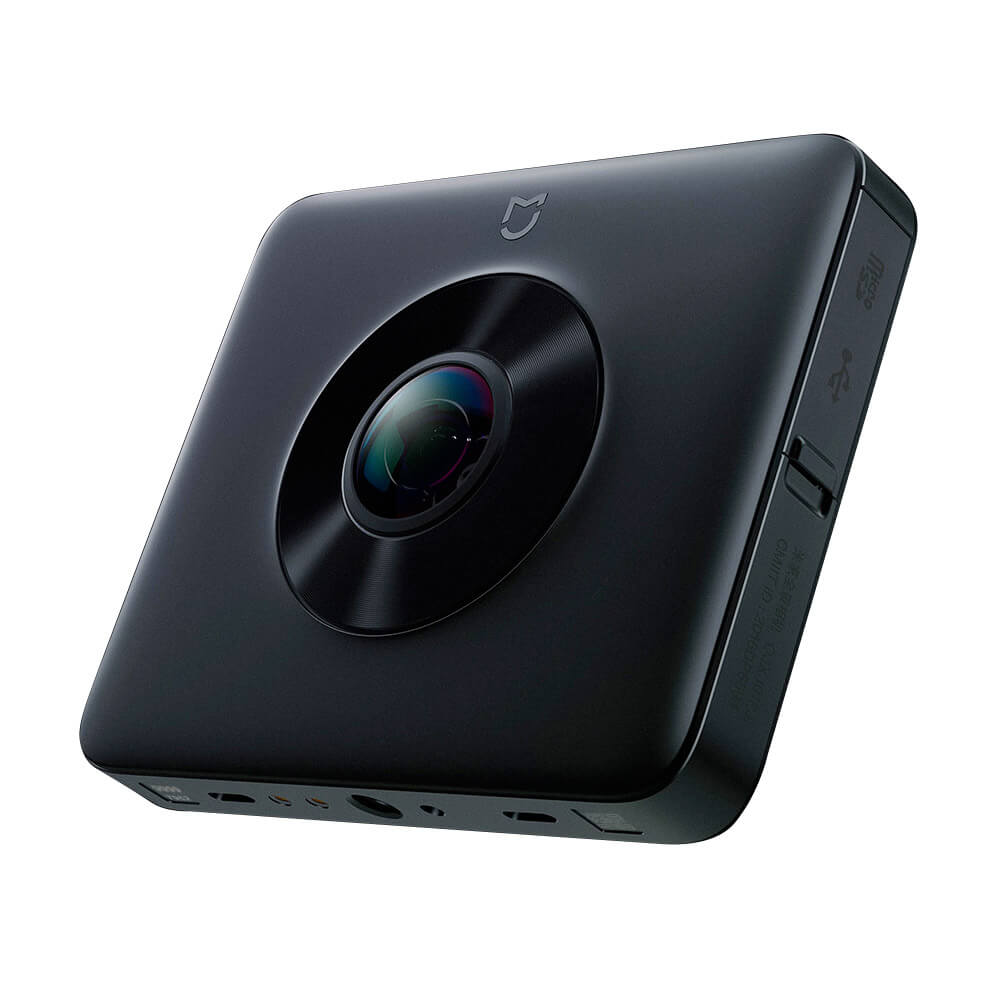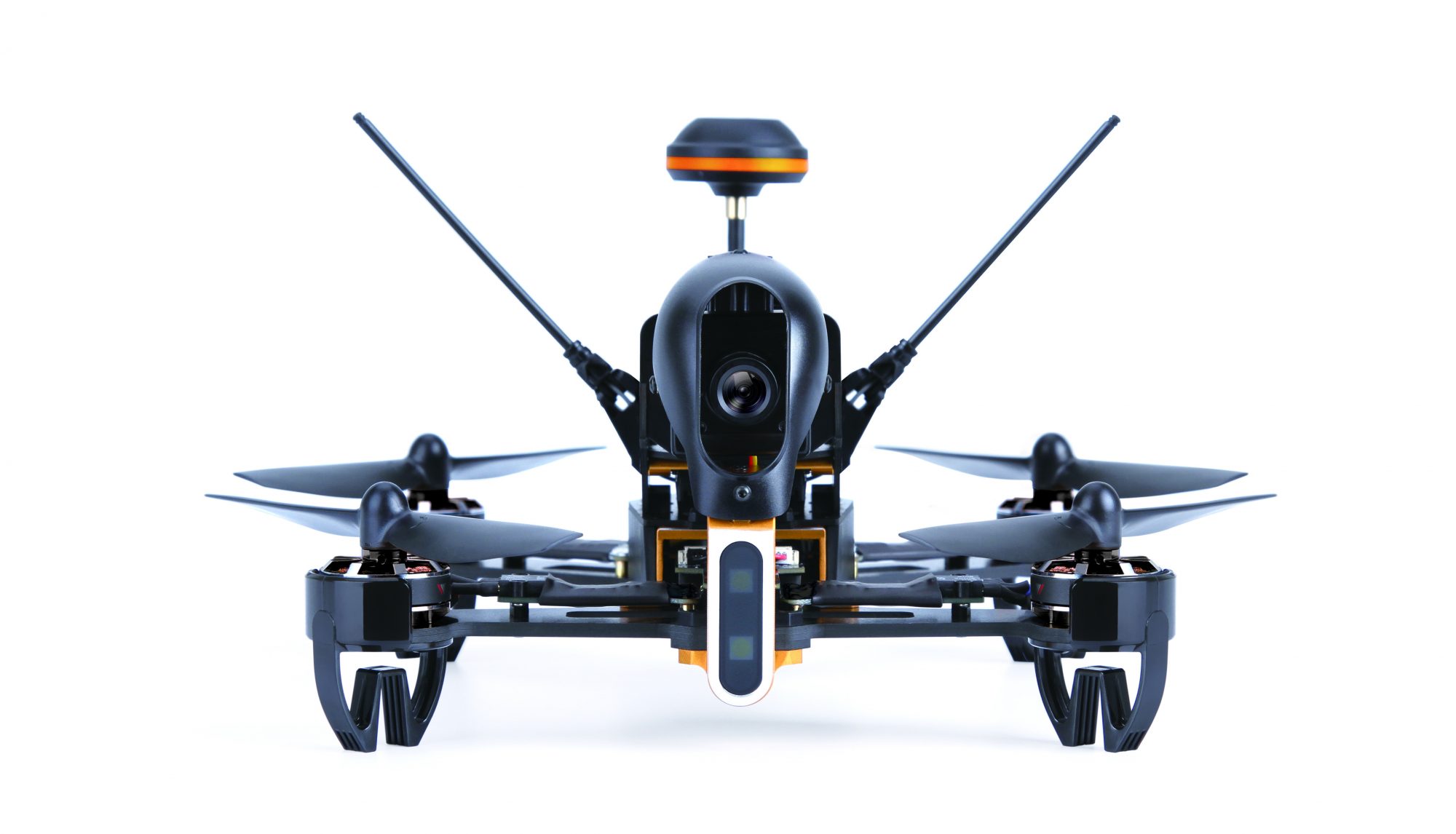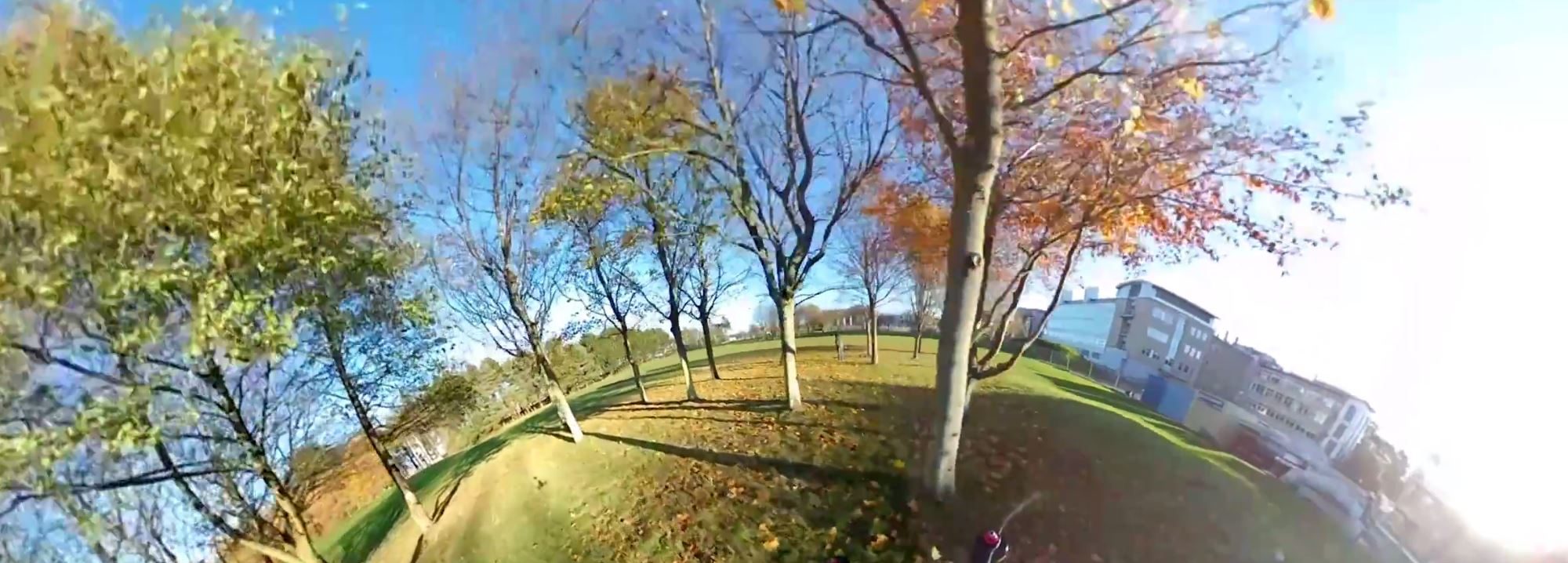360 degree “Inception Style” video on a FPV racing drone
CJ Davies has a Ph.D. in computer science, lives in England, and he has a hobby: 360° filming. And he combines that with his second hobby, flying FPV drones. He just made incredible shots with a Mijia Mi Sphere camera and a drone:
CJ Davies on his 360 ° FPV video – from 6 GoPro Hero to Mijia Mi Sphere
[German translation can be found below!]
Hi there!
I’ve had an interest in 360° media for some years now, after doing a Ph.D. in Computer Science during the beginning of the current VR resurgence (https://www.youtube.com/watch?v=UsDRPjDwr8A) then working professionally as a 360° stills photographer for several years.
My first contact with 360 ° video was with clunky multi-camera solutions (think six GoPro Hero 4 Black in an expensive bespoke rig) that would take just hours to remove all the cameras, take the SD cards out & dump all the files onto the computer, then many more hours on expensive sewing software manually tweaking things to get a passable result.
360° solutions (usually twin-lens style) in the last few years, as the Ricoh Theta & the Samsung Gear 360, which boast much faster / simpler workflows, but I did not consider any of them worth buying (& I did try several hands-on) until Xiaomi came out with her Mijia Mi Sphere camera earlier this year.
The Xiaomi camera has the IMU built in, which allows the footage to remain level & pointing in the same direction even as the camera rotates or turns upside down the video as you’re watching it, plus it gets rid of a lot of vibration/shakes. Xiaomi camera is really engaging with the community via Facebook to address feedback, distribute beta software/firmware builds for testing, etc.
My first attempt puts it on a drone what the relative safety of my tarot 650 on a trip to Iceland
Third attempt at mounting the Xiaomi camera on the Tarot 650
A post shared by @ cj.fpv on Aug 11, 2017 at 4:11 am PDT
This should not be so entertaining.
A post shared by @ cj.fpv on Aug 14, 2017 at 2:04 am PDT
Trying to make a break in the wind for shooting 360 video.
A post shared by @ cj.fpv on Aug 28, 2017 at 12:39 am PDT
Putting it on a 6 “FPV quad what a lot riskier, but I think the footage is definitely worth it
A post shared by @ cj.fpv on Nov 26, 2017 at 7:17 am PST
The footage was stitched via the Mijia Mi Sphere app for Android (and it’s actually almost hardware acceleration) and then I edited it in Adobe Premiere CC 2018 using the GoPro VR plugins that you can install for Premiere / After Effects by installing the GoPro Fusion Studio (even if you do not have a GoPro Fusion & cannot actually use the Fusion Studio software).
Let me know if you have any questions!
Regards,
CJ Davies

German
Hello!
I’ve been interested in 360 ° for several years now, after doing my PhD at the beginning of the current VR upswing (https://www.youtube.com/watch?v=UsDRPjDwr8A) and then professionally as a 360 ° photographer for several years ( https://cjdavies.org/#360).
My first contact with 360° video was with chunky multi-camera solutions (six GoPro Hero 4 Black in an expensive custom-made rig). It took hours to remove all the cameras, remove the SD cards and copy all the files to the computer. Then many more hours to manually connect the images in an expensive stitching software, to arrive at a passable result.
A number of companies have released single-camera solutions for 360 ° in recent years (usually double lenses), such as the Ricoh Theta and Samsung Gear 360, which offer much faster and easier workflows. But I did not find any of them worth buying (though I had them in my hand) until Xiaomi came out with the Mijia Mi Sphere camera earlier this year.
The Xiaomi camera was (I think) the first to have an IMU installed that allows the footage to stay in the same orientation, even when the camera is spinning or turned upside down, and the video has much less vibration /Shaking. The quality of stitching with the Xiaomi camera is also very good and Xiaomi are really committed to sharing feedback with the Facebook community, distributing beta software/firmware builds for testing, etc.
My first attempt to attach the camera to a drone was on a trip to Iceland in the relative safety of my Tarot 650:
[Pictures see above]
[Video above]
The footage was made via the Mijia Mi Sphere app for Android (believe it or not, it’s really fast with hardware acceleration!), And then I edited it in Adobe Premiere CC 2018 with the GoPro VR plugins, which it did for Premiere / After Effects installs by installing GoPro Fusion Studio (even if you do not have GoPro Fusion and can not use Fusion Studio software).
Please let me know if you have any questions!
Greetings,
CJ Davies
More information about CJ and its projects
360 Quad Minisite: 360 Miniquad
Youtube Channel: CJ Davies
Website: cjdavies.org
Xiaomi Mijia Mi Sphere 360 Camera

Video player
CJ Davies on his 360 ° FPV video – from 6 GoPro Hero to Mijia Mi Sphere
[German translation can be found below!]
Hi there!
I’ve had an interest in 360 ° media for some years now, after doing a Ph.D. in Computer Science during the beginning of the current VR resurgence (https://www.youtube.com/watch?v=UsDRPjDwr8A) then working professionally as a 360° stills photographer (https://cjdavies.org/#360) for several years.
My first contact with 360 ° video was with clunky multi-camera solutions (think six GoPro Hero 4 Black in an expensive bespoke rig) that would take just hours to remove all the cameras, take the SD cards out & dump all the files onto the computer, then many more hours on expensive sewing software manually tweaking things to get a passable result.
360° solutions (usually twin-lens style) in the last few years, as the Ricoh Theta & the Samsung Gear 360, which boast much faster / simpler workflows, but I did not consider any of them worth buying (& I did try several hands-on) until Xiaomi came out with her Mijia Mi Sphere camera earlier this year.
The Xiaomi camera has the IMU built in, which allows the footage to remain level & pointing in the same direction even as the camera rotates or turns upside down the video as you’re watching it, plus it gets rid of a lot of vibration/shakes. Xiaomi camera is really engaging with the community via Facebook to address feedback, distribute beta software/firmware builds for testing, etc.
My first attempt puts it on a drone what the relative safety of my tarot 650 on a trip to Iceland
Putting it on a 6 “FPV quad what a lot riskier, but I think the footage is definitely worth it
The footage was stitched via the Mijia Mi Sphere app for Android (and it’s actually almost hardware acceleration) and then I edited it in Adobe Premiere CC 2018 using the GoPro VR plugins that you can install for Premiere / After Effects by installing the GoPro Fusion Studio (even if you do not have a GoPro Fusion & cannot actually use the Fusion Studio software).
Let me know if you have any questions!
Regards,
CJ Davies

German
Hello!
I’ve been interested in 360 ° for several years now, after doing my PhD at the beginning of the current VR upswing (https://www.youtube.com/watch?v=UsDRPjDwr8A) and then professionally as a 360 ° photographer for several years ( https://cjdavies.org/#360).
My first contact with 360° video was with chunky multi-camera solutions (six GoPro Hero 4 Black in an expensive custom-made rig). It took hours to remove all the cameras, remove the SD cards and copy all the files to the computer. Then many more hours to manually connect the images in an expensive stitching software, to arrive at a passable result.
A number of companies have released single-camera solutions for 360 ° in recent years (usually double lenses), such as the Ricoh Theta and Samsung Gear 360, which offer much faster and easier workflows. But I did not find any of them worth buying (though I had them in my hand) until Xiaomi came out with the Mijia Mi Sphere camera earlier this year.
The Xiaomi camera was (I think) the first to have an IMU installed that allows the footage to stay in the same orientation, even when the camera is spinning or turned upside down, and the video has much less vibration /Shaking. The quality of stitching with the Xiaomi camera is also very good and Xiaomi are really committed to sharing feedback with the Facebook community, distributing beta software/firmware builds for testing, etc.
My first attempt to attach the camera to a drone was on a trip to Iceland in the relative safety of my Tarot 650:
[Pictures see above]
Putting the camera on a 6 “FPV quad was much riskier, but I think the material was definitely worth it
[Video above]
The footage was made via the Mijia Mi Sphere app for Android (believe it or not, it’s really fast with hardware acceleration!), And then I edited it in Adobe Premiere CC 2018 with the GoPro VR plugins, which it did for Premiere / After Effects installs by installing GoPro Fusion Studio (even if you do not have GoPro Fusion and can not use Fusion Studio software).
Please let me know if you have any questions!
Greetings,
CJ Davies
More information about CJ and its projects
360 Quad Minisite: 360 Miniquad
Youtube Channel: CJ Davies
Website: cjdavies.org
Xiaomi Mijia Mi Sphere 360 Camera





Don’t know German but this shit is rad!!! Thinking about getting a 360 Cam on my Alien.
@Jeff: Interview is in English also 😉